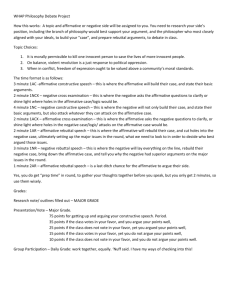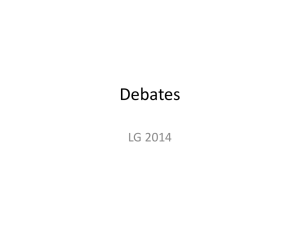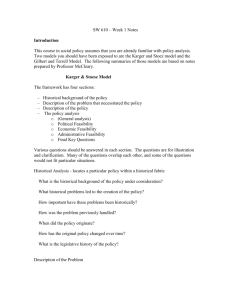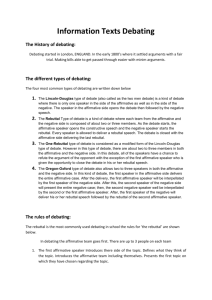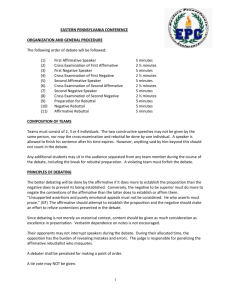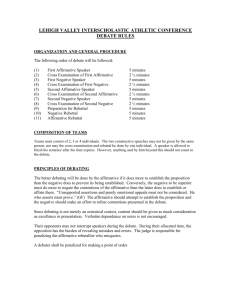Debate format walk through
advertisement
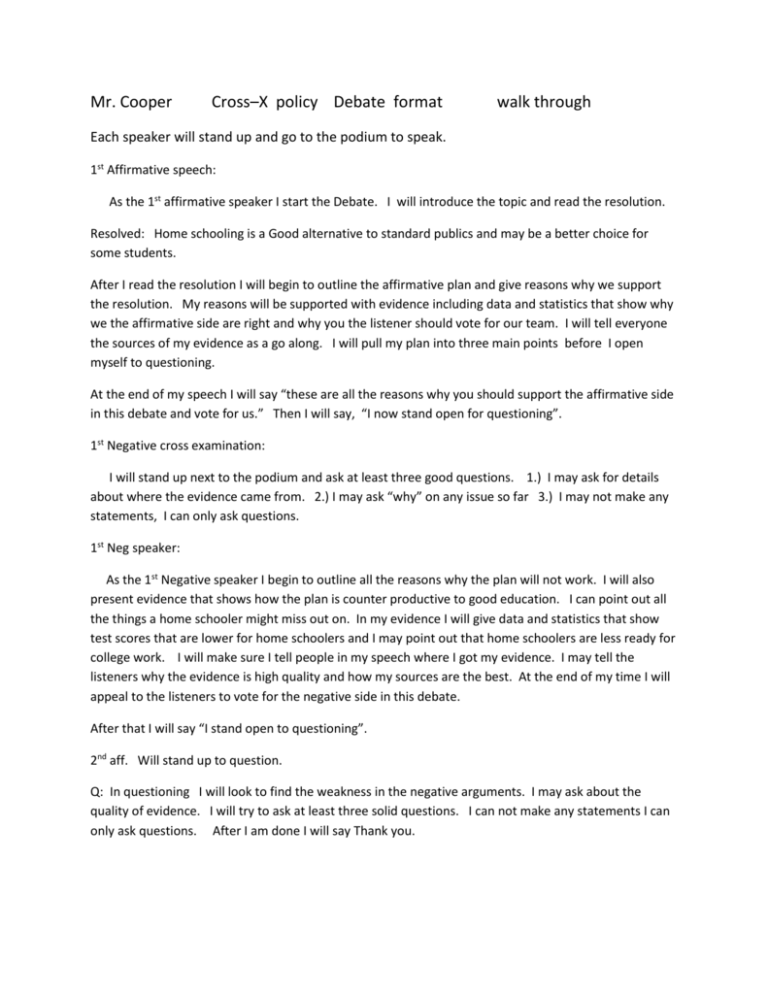
Mr. Cooper Cross–X policy Debate format walk through Each speaker will stand up and go to the podium to speak. 1st Affirmative speech: As the 1st affirmative speaker I start the Debate. I will introduce the topic and read the resolution. Resolved: Home schooling is a Good alternative to standard publics and may be a better choice for some students. After I read the resolution I will begin to outline the affirmative plan and give reasons why we support the resolution. My reasons will be supported with evidence including data and statistics that show why we the affirmative side are right and why you the listener should vote for our team. I will tell everyone the sources of my evidence as a go along. I will pull my plan into three main points before I open myself to questioning. At the end of my speech I will say “these are all the reasons why you should support the affirmative side in this debate and vote for us.” Then I will say, “I now stand open for questioning”. 1st Negative cross examination: I will stand up next to the podium and ask at least three good questions. 1.) I may ask for details about where the evidence came from. 2.) I may ask “why” on any issue so far 3.) I may not make any statements, I can only ask questions. 1st Neg speaker: As the 1st Negative speaker I begin to outline all the reasons why the plan will not work. I will also present evidence that shows how the plan is counter productive to good education. I can point out all the things a home schooler might miss out on. In my evidence I will give data and statistics that show test scores that are lower for home schoolers and I may point out that home schoolers are less ready for college work. I will make sure I tell people in my speech where I got my evidence. I may tell the listeners why the evidence is high quality and how my sources are the best. At the end of my time I will appeal to the listeners to vote for the negative side in this debate. After that I will say “I stand open to questioning”. 2nd aff. Will stand up to question. Q: In questioning I will look to find the weakness in the negative arguments. I may ask about the quality of evidence. I will try to ask at least three solid questions. I can not make any statements I can only ask questions. After I am done I will say Thank you. 2nd affirmative speech – As the second affirmative speaker I will continue to reinforce the objectives of the affirmative plan. I will give more evidence. This time I will include a story about a real person who has been effected by home schooling, it will be in a positive way. When I am done with the story I will point out how this has been such a great benefit to this student. I will use reasoning and logic to convince people our plan is the best way to better education. I will give my sources of all evidence and will show how our evidence is high quality. At the end of my speech I will say “for all these reasons and evidence presented I urge you to vote the affirmative side in this debate. Then I will say “ I am now open to questioning”. 2nd Neg speaker will stand up to question. Q: In my cross examination I will ask “ Where did you get that evidence?” I may attempt to get the opposition to admit they made a mistake. If I can catch any error they made I will call them on it. I will try to ask at least three good questions. Then I will say thank you as they sit down. 2nd Negative speaker – I will get right to work showing how the affirmative has made mistakes. I will question their logic and reasoning and will present evidence that shows the negative. During my speech I will give a real world example of someone who has been negatively impacted by home schooling. This is called anecdotal evidence and if my story sounds better or more believable than their story I will win this debate point. I will give all my sources of evidence and at the end I will claim to have proven my case. I will ask the listener to vote for my side and close by saying “ I now stand open for questioning.” Affirmative Cross examination: aff. speaker will stand to ask questions. In this last opportunity to ask questions I will search for the weakness in their arguments and look for their mistakes. I may ask them for the sources of evidence if I see a weakness to the quality of the evidence I may point it out. BUT I can not make statements I can only ask questions. After I ‘m done I will say thank you and sit down. The Negative team gets the 1st Rebuttal One speaker from the negative team will start - In the rebuttal NO New evidence may be presented. I may only restate the reasons or talk about evidence already in play. The two negative speakers may split the time or it may be all one speaker. At the end of this speech I will summarize all the best reasons why we should win and ask the listeners to vote for the negative team. The affirmative team gets last rebuttal – we will state all the best arguments are on our side and ask for the win. Restate all our best stuff. “ for all these reasons we believe we have proved our side”. Say thank you, closing the debate.


